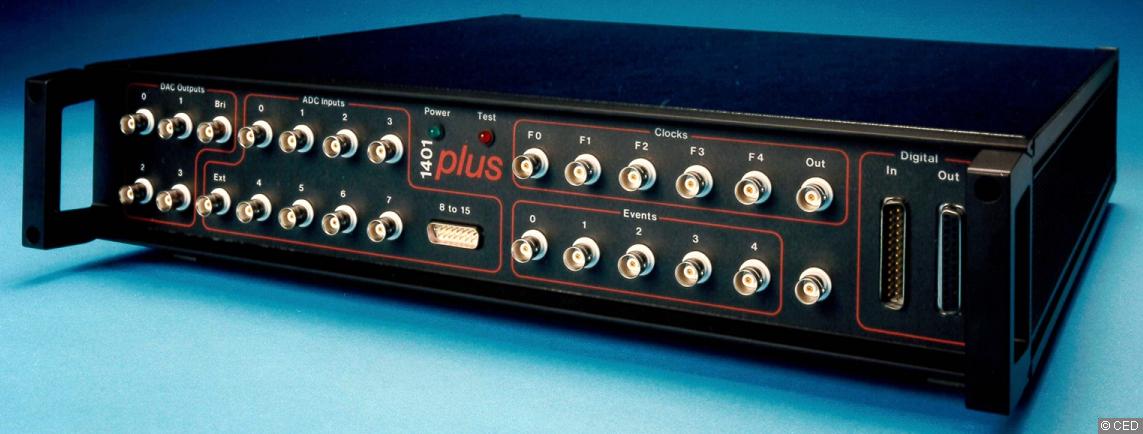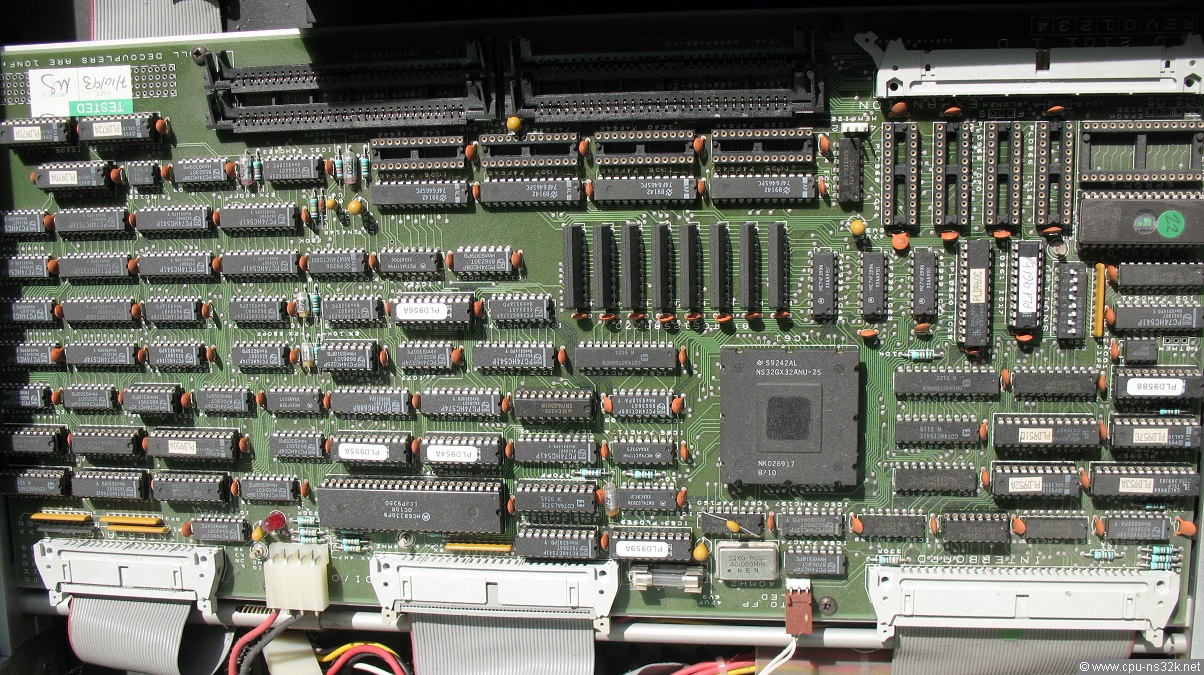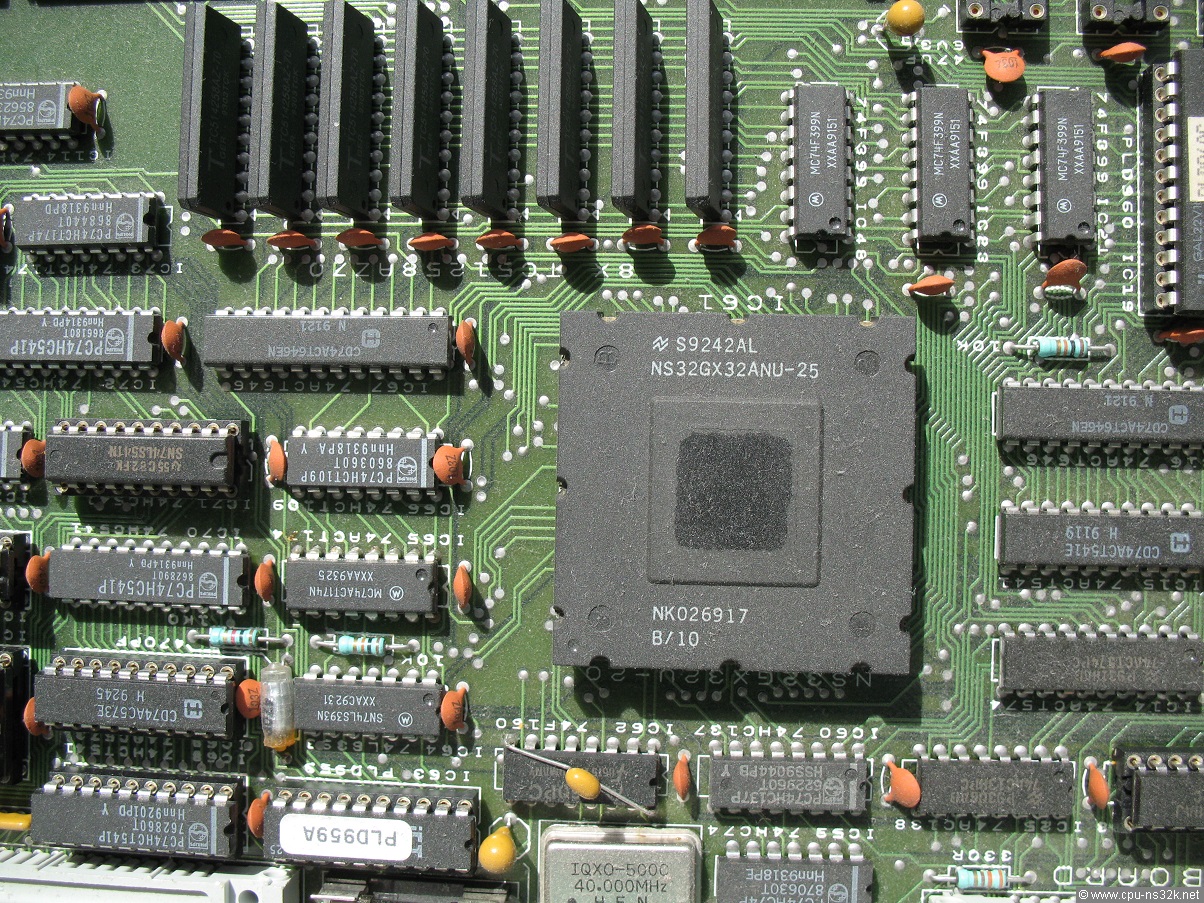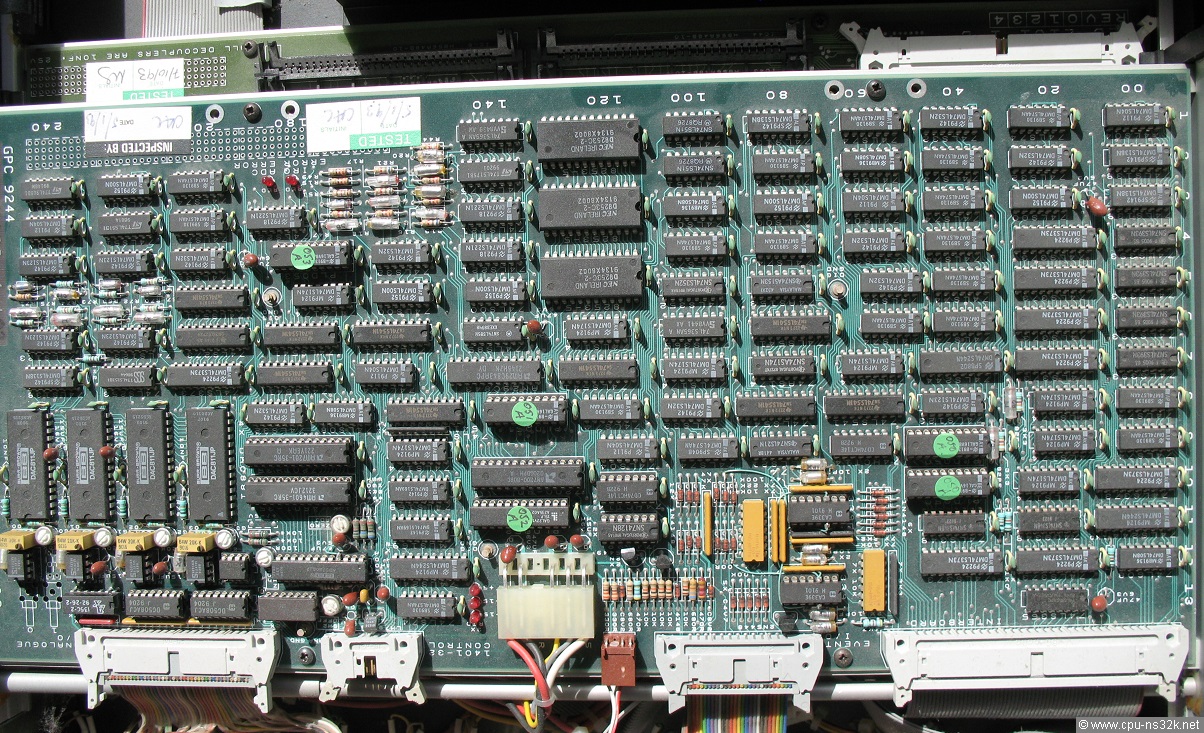Cambridge Electronic Design Limited (CED)
In March 2017 I got contact to an english company named CED. The web address is www.ced.co.uk. It is a little company and they are specialist for building data acquisition systems.
Their first system with the number 1401 used the 6502 microprocessor. It came to market in 1983. In 1990 the successor was presented: the 1401plus. For this system a Series 32000 processor was choosen. The acquisition system requires no memory management unit nor floating point support. Therefore the NS32GX32 CPU was choosen. This CPU has the same processing power like the NS32532 CPU but is much cheaper. It was no problem for CED to write the system software in Assembler.

Fig. 1. The 1401plus data acquisition system.
Due to the unavailability of a more powerful successor for the NS32GX32 CED switched to another processor architecture later. But even in 2017 some of the old 1401plus systems are still in use or being sold at ebay fully functional.

Fig. 2. The CPU board of the 1401plus is an unusual view: all devices use black plastic packages - even the NS32GX32A CPU!
The 1401plus has a memory capacity of 1 to 16 Mbyte. At the top edge of the CPU board in Figure 2 four sockets for memory modules are placed.

Fig. 3. A detailed view of the CPU board showing the NS32GX32A CPU. The eight devices in ZIP packages are 1-Mbit Toshiba DRAMs.
The text on the PCB below the NS32GX32A CPU says that the CPU shall be a 20 MHz part. Maybe it was easier for CED to get 25 MHz parts like the one shown in Figure 3. The quartz oscillator at the lower edge is rated at 40 MHz which let the CPU run at 20 MHz.

Fig. 4. One of the analog boards of the 1401plus. On the left side four 12-bit DACs from Burr-Brown can be seen. Burr-Brown was later acquired by Texas Instruments.
This chapter was created with great support from CED. Thank you very much for your help!
Next chapter: Ceres